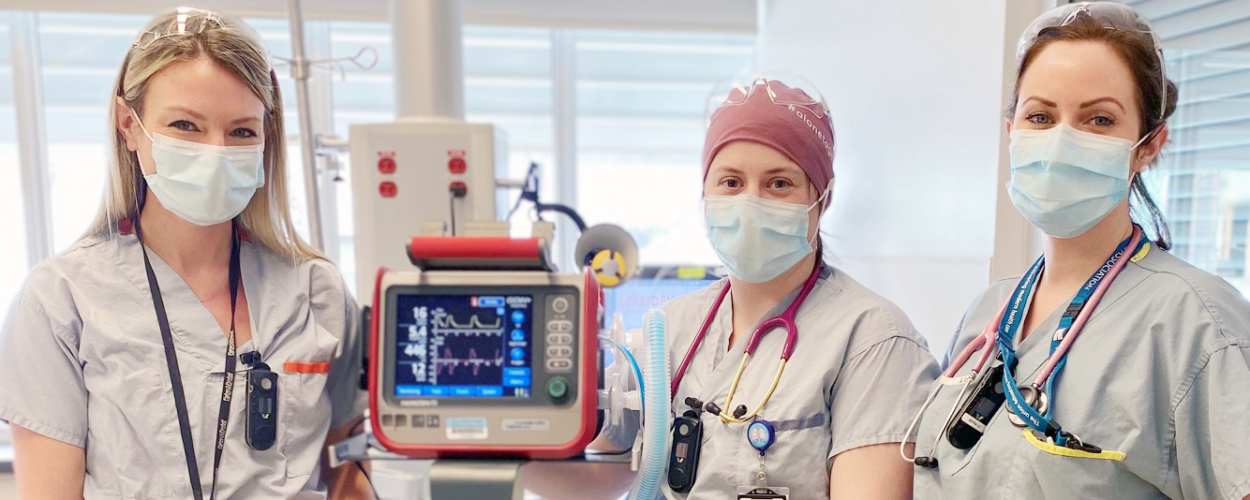The new HAMILTON-T1 transport ventilator funded by TB Vets donors has made it possible for Royal Inland Hospital (RIH) in Kamloops to provide better care in the Emergency Room and at rural sites in the Interior.
A much-needed upgrade for better respiratory care
The two trauma bays in the Emergency Department at RIH are used daily, sometimes multiple times a day. One already had a HAMILTON-T1 ventilator, but the second bay was equipped with an older, outdated equipment that was close to end of life.
With its graphic package feature, the new T1 ventilator from TB Vets allows clinicians to better visualize what is happening in real time. Not only is it more user-friendly and technologically advanced, it can also be used on neonatal, pediatric, and adult patients – all of whom can be treated in the Trauma Room. Having less cumbersome, updated and reliable ventilators in both of the trauma bays – often used for life-and-death situations – is paramount for the large teams of medical professionals working together in a small space.
Moreover, the portability of the T1 ventilator allows it to be used in most rural and remote sites, which provides familiarity among the frontline and, thus, better support over the phone, prior to the High-Acuity Response Team (HART) arriving for patient transfers from these smaller sites back to Royal Inland.
Royal Inland Hospital’s Emergency Department sees over 70,000 visits per year, and its trauma centre is the third busiest in the province. As one of only two tertiary (specialized) care hospitals in the Interior of British Columbia, RIH serves a large geographic region and a population of 220,000 and growing. Due to its geographic location, surrounded by natural resources, busy highways and an abundance of recreational opportunities, the hospital provides life-saving care to both local residents and many visitors to the region who require immediate medical treatment, often unexpectedly.


